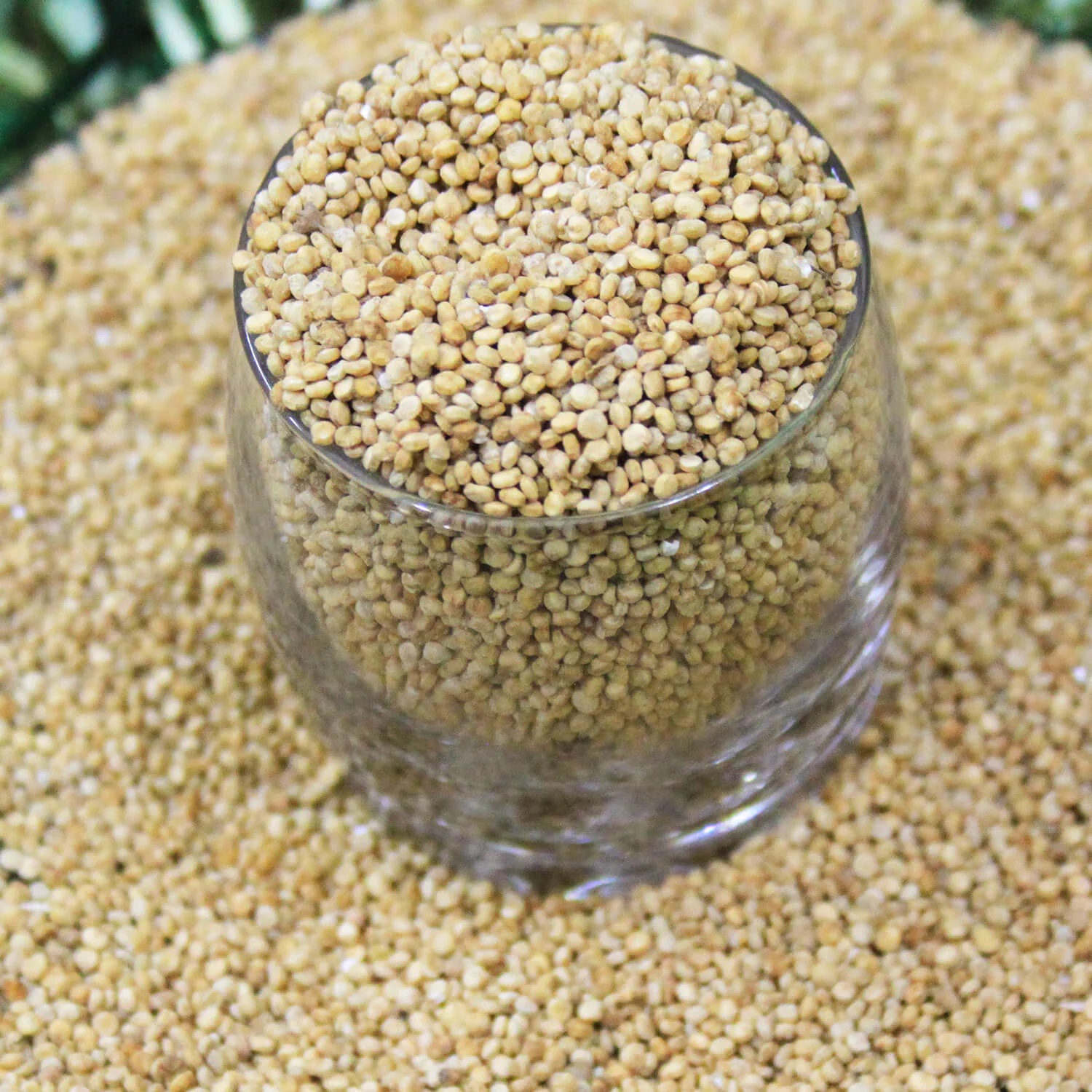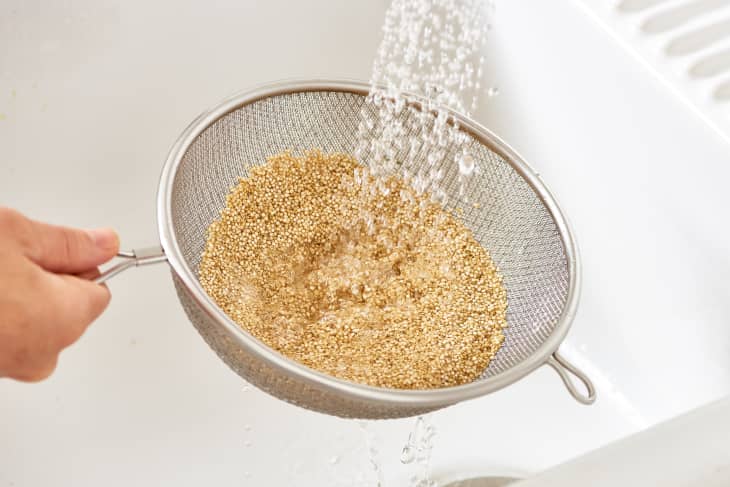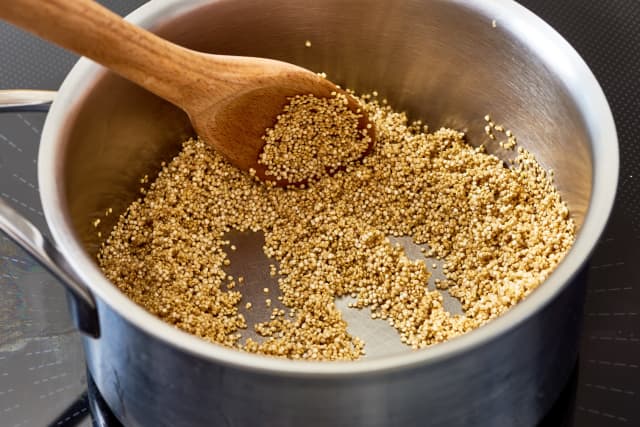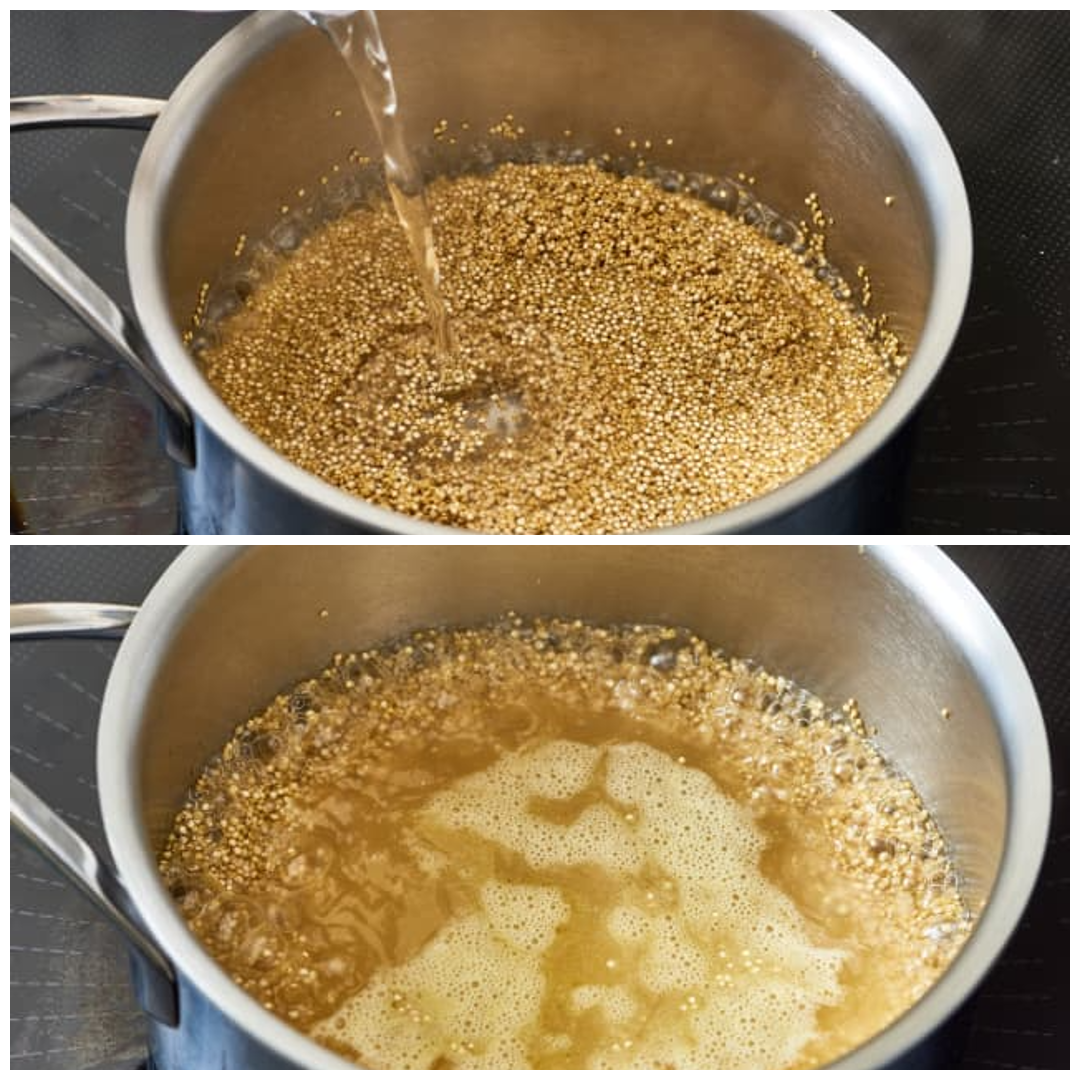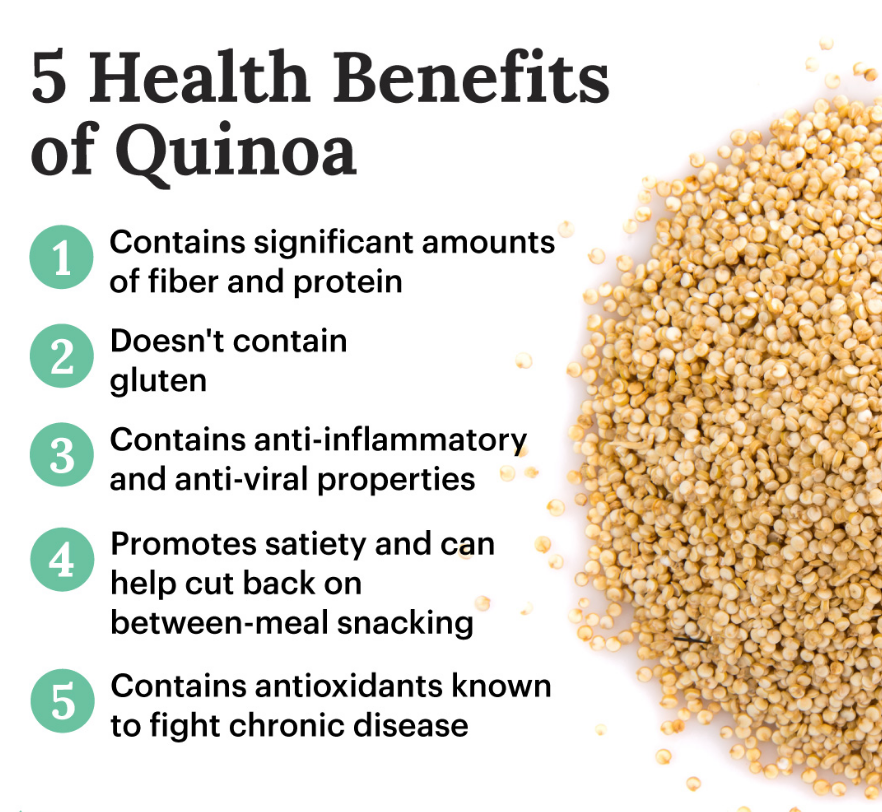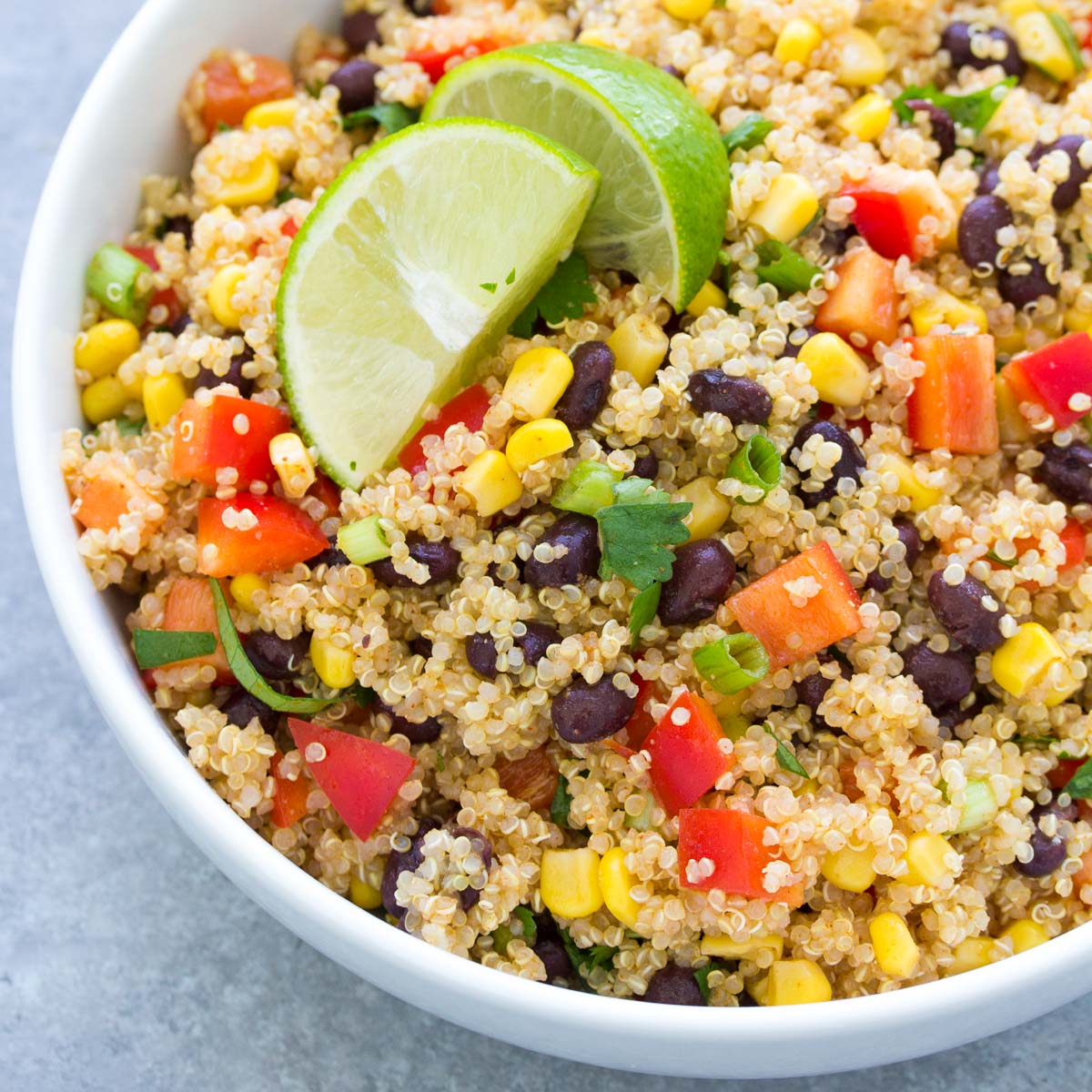![How To Cook Quinoa Perfectly Every Time [Quick & Easy]](https://www.hangrypants.com/wp-content/uploads/2024/12/0bb6771cf9db8061/how-to-cook-quinoa-perfectly.jpeg)
Quinoa has come a long way from the shelves of specialty health food stores to become a staple in kitchens around the world.
Known for its fluffy texture, nutty flavor, and impressive nutritional profile, quinoa is a versatile and nutritious addition to countless meals.
With its high protein content, fiber, and essential nutrients, quinoa is a top choice for those looking to create healthy, balanced meals without sacrificing flavor.
Mastering the art of cooking quinoa opens up a world of culinary possibilities, from hearty grain bowls and salads to wholesome side dishes and even breakfast bowls.
Whether you’re new to cooking quinoa or looking to perfect your technique, this guide will show you how to cook quinoa perfectlyevery time. Get ready to make quinoa a staple in your meal prep and daily cooking routine!
Quick Tips For Perfect Quinoa
For those who want a quick start, here are a few essential tips to help you achieve fluffy, delicious quinoa every time:
- Rinse Before Cooking: Rinsing quinoa thoroughly under cold water helps remove its natural coating, saponin, which can impart a bitter taste. Even if labeled as “pre-rinsed,” a quick rinse improves the flavor and texture.
- Use the Right Water Ratio: For light and fluffy quinoa, use 2 cups of water for every 1 cup of quinoa. If you prefer a firmer texture, reduce the water slightly to about 1.75 cups.
- Cook Uncovered, Then Let Rest: Cooking quinoa uncovered allows excess water to evaporate, preventing mushiness. Once the water is absorbed, cover the pot and let the quinoa rest for 5 minutes to fluff up fully.
- Fluff with a Fork: After resting, use a fork to gently fluff the quinoa. This ensures each grain stays separated for a light, airy texture, ideal for salads, bowls, and side dishes.
- Experiment with Broth and Aromatics: For added flavor, try cooking quinoa in vegetable or chicken broth instead of water, and consider adding a bay leaf, clove of garlic, or fresh herbs for extra depth. This makes for a flavorful base in any dish!
What Is Quinoa?
Quinoa (pronounced KEEN-wah) is often referred to as a grain, but it’s technically a seed derived from a flowering plant native to the Andes in South America.
Known as “the mother grain” by the ancient Incas, quinoa has been cultivated for over 5,000 years and was prized for its resilience in high-altitude, arid climates.
Today, quinoa is celebrated worldwide for its exceptional nutritional profile and versatility in the kitchen.
Nutritional Benefits Of Quinoa
Quinoa is a nutritional powerhouse, rich in essential vitamins and minerals, including magnesium, manganese, phosphorus, and folate. Unlike most plant-based foods, quinoa is a complete protein, meaning it contains all nine essential amino acids.
This makes it an excellent protein source for vegetarians and vegans. Additionally, quinoa is high in fiber, which supports digestion, and has a low glycemic index, which may help regulate blood sugar levels.
Types Of Quinoa: White, Red, And Black
Quinoa is available in several varieties, each with a distinct flavor and texture:
- White Quinoa: This is the mildest and most common variety, with a light, fluffy texture that works well in most recipes.
- Red Quinoa: Slightly earthier in flavor, red quinoa holds its shape better, making it ideal for salads or dishes where you want the quinoa to stand out.
- Black Quinoa: With a bolder taste and crunchier texture, black quinoa has a more robust, earthy flavor that pairs well with savory dishes.
If you’re new to quinoa, white quinoa is a good starting point due to its milder flavor and versatility. Once you’re comfortable, you can experiment with red and black quinoa to discover the unique textures and flavors each variety offers.
Related: How To Make Dairy-Free Cream - 10 Simple Recipes For Every Dish
Step-by-Step Guide: How To Cook Quinoa Perfectly
This section is designed to make cooking quinoa easy, with added details on each cooking method and practical “Pro Tips.”
1. Rinse The Quinoa
Quinoa has a natural coating of saponin, a compound that can impart a bitter or soapy flavor. Rinsing the quinoa before cooking removes this coating, improving its taste and making it easier to digest.
Place the quinoa in a fine-mesh strainer and rinse it under cold water for at least 30 seconds. Gently rub the grains with your fingers to ensure thorough rinsing, then let it drain well.
2. Optional: Toast The Quinoa For Extra Flavor
Pro Tip: Toasting quinoa adds a rich, nutty flavor that enhances its natural taste. After rinsing, heat a tablespoon of olive oil in a saucepan over medium heat.
Add the quinoa and cook, stirring frequently, until the water evaporates and the quinoa smells fragrant, about 2–3 minutes. This step is optional but can elevate the flavor of quinoa, making it an excellent choice for salads and side dishes.
3. Water-to-Quinoa Ratio Options
Getting the water-to-quinoa ratio right is crucial for achieving the ideal texture. Here are some commonly used ratios based on different preferences:
- Standard Ratio (2:1): Use 2 cups of water for every 1 cup of quinoa. This ratio yields fluffy, separate grains and works well for most dishes.
- Firmer Texture (1.75:1): If you prefer a slightly firmer quinoa, reduce the water to 1.75 cups per cup of quinoa. This option is ideal if you’re adding dressing or cooking quinoa in a dish where it will absorb more liquid.
- Broth for Added Flavor: For a richer taste, replace water with vegetable or chicken broth. This adds depth to the quinoa’s flavor, making it more savory and complex.
4. Cooking Methods
Stovetop Method
- Combine the rinsed quinoa and water (or broth) in a medium saucepan.
- Bring the mixture to a boil over medium-high heat.
- Once it boils, reduce the heat to low, cover with a lid, and let it simmer for 15–20 minutes, or until the water is absorbed.
- Remove the saucepan from the heat, but keep it covered. Let it sit for an additional 5 minutes to allow the quinoa to steam and fully absorb any remaining moisture.
- Fluff the quinoa with a fork before serving.
Watch: How to Cook Quinoa Perfectly Fluffy Every TimeFor a full visual guide to cooking quinoa on the stovetop, watch this step-by-step video to see each step in action:
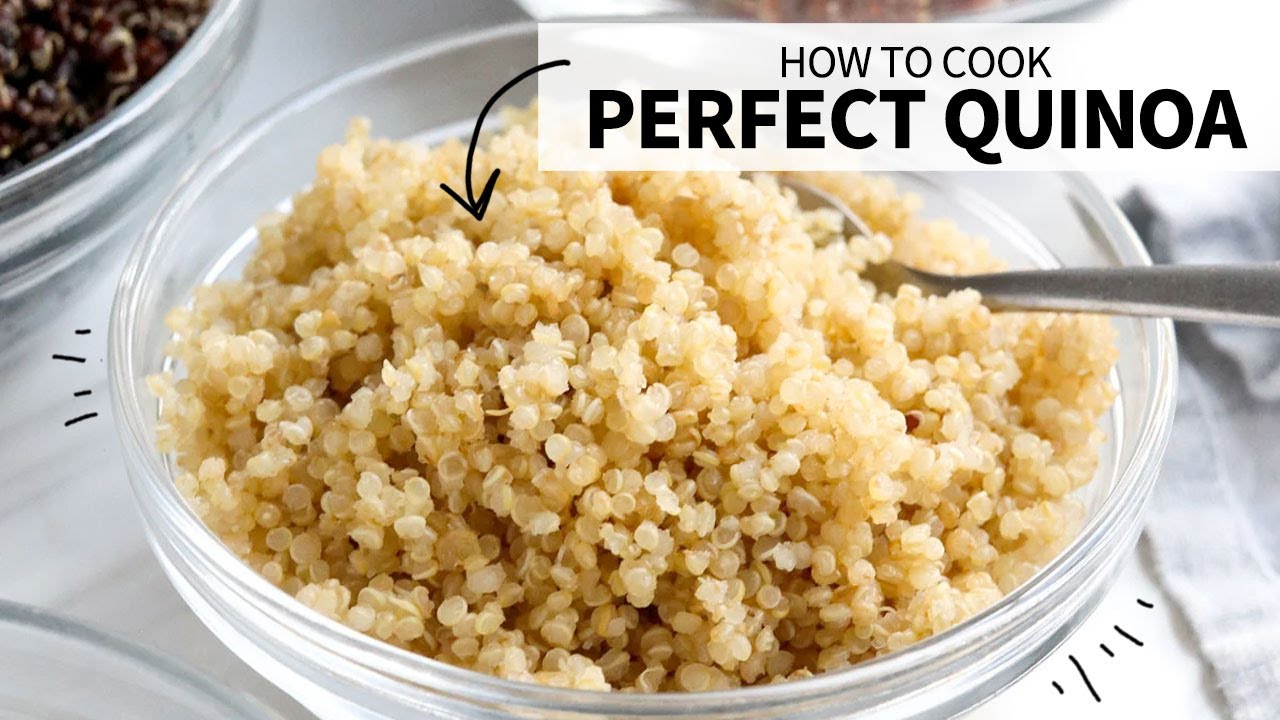
How to Cook Quinoa | Perfectly Fluffy Every Time!
Rice Cooker Method
- Place 1 cup of rinsed quinoa and 2 cups of water or broth in your rice cooker.
- Select the “white rice” or “grain” setting, if available, which will cook the quinoa in about 15–20 minutes.
- Once the cooking cycle finishes, allow the quinoa to rest in the rice cooker for 5–10 minutes with the lid closed.
- Fluff with a fork, and it’s ready to serve.
Watch: How to Cook Quinoa Perfectly In Rice Cooker:
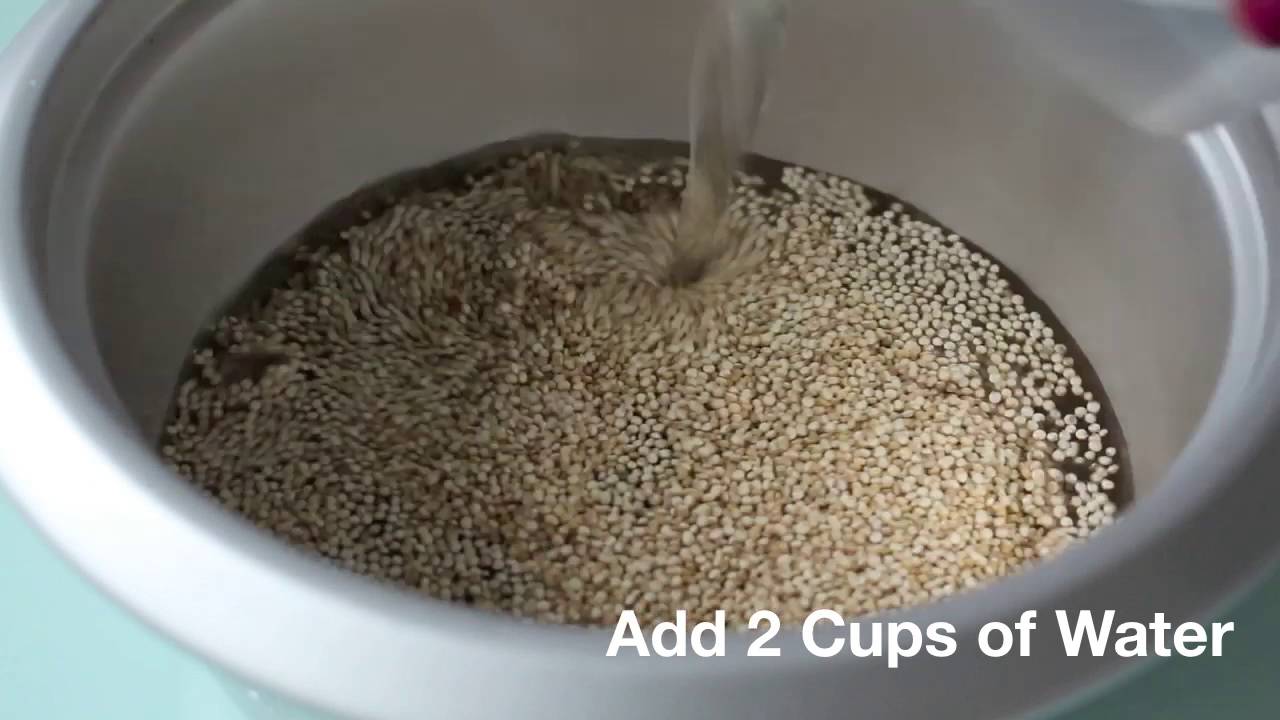
Super Recipe - How to cook Quinoa in a Rice Cooker
Flavor And Seasoning Tips
Quinoa’s mild, nutty taste makes it a great base for a variety of flavors. Here’s how to season quinoa and elevate it from simple to standout:
1. Base Seasoning
At its simplest, quinoa pairs well with a bit of salt, pepper, and olive oil. After cooking, try adding a drizzle of olive oil, a sprinkle of kosher salt, and a squeeze of fresh lemon or lime juice for a refreshing twist.
2. Cooking In Broth And Adding Aromatics
For deeper flavor, replace water with vegetable or chicken broth. Adding a bay leaf, a smashed garlic clove, or a sprig of rosemary to the cooking water brings extra depth to the taste.
Pro Tip: Remove aromatics after cooking, leaving behind infused flavor without overpowering the dish.
3. Fresh Herbs, Spices, And Toppings
Quinoa works well with a variety of herbs and spices:
- Fresh Herbs: Stir in chopped parsley, cilantro, basil, or mint after cooking for a fresh, vibrant taste.
- Spices: Add ground cumin, paprika, or turmeric to the cooking water for an earthy, warm flavor.
- Toppings: Add texture and flavor with toasted almonds, walnuts, sun-dried tomatoes, or crumbled feta cheese.
4. Sweet Additions For Breakfast Quinoa
Quinoa can even shine as a breakfast dish. Try cooking it in almond or coconut milk, then add cinnamon, honey, fresh berries, and nuts for a warming breakfast bowl.
See Also: How To Make Broth From Scratch? Ingredients & Steps
Common Mistakes To Avoid
Even though quinoa is simple to cook, common mistakes can impact its flavor and texture. Here’s how to avoid these pitfalls:
1. Not Rinsing The Quinoa
Skipping the rinse step can leave a bitter taste.
Pro Tip: Always rinse quinoa thoroughly in a fine-mesh strainer to remove its natural coating of saponins, which can taste soapy.
2. Using Too Much Or Too Little Water
Correct water ratio is essential. Using too much water can make quinoa mushy, while too little leaves it undercooked. Stick to the standard 2:1 water-to-quinoa ratio for fluffy texture, or 1.75:1 for a firmer result.
3. Cooking On High Heat
Cooking on high heat can cause quinoa to absorb water unevenly, leading to a mix of overcooked and undercooked grains.
Pro Tip: Bring to a boil, then reduce to a gentle simmer for consistent results.
4. Skipping The Rest And Fluffing Step
After cooking, let the quinoa sit, covered, for about 5 minutes to absorb remaining moisture.
Pro Tip: Fluff with a fork to separate grains, making them light and airy.
5. Overlooking Visual Cues For Doneness
A sign of well-cooked quinoa is the spiral “tail” separating from each seed. Look for these curls to ensure your quinoa is perfectly done!
Health Benefits Of Quinoa
Quinoa is a nutrient-dense food that provides several health benefits, making it an excellent addition to a balanced diet:
Complete Protein Source
Quinoa contains all nine essential amino acids, making it a complete protein. This is particularly beneficial for vegetarians and vegans, as it offers a protein alternative to animal-based foods.
High In Fiber
With almost twice the fiber of most grains, quinoa supports digestion and may help with blood sugar regulation and weight management by promoting satiety.
Rich In Essential Nutrients
Quinoa is packed with magnesium, iron, manganese, and folate. These nutrients support muscle function, energy production, and cell growth, making quinoa a valuable addition to any diet.
Antioxidant Properties
Quinoa contains antioxidants that help protect cells from damage and may reduce inflammation, contributing to improved heart health.
Low Glycemic Index
Quinoa has a relatively low glycemic index, leading to a slower increase in blood sugar. This makes it a good carbohydrate choice for individuals managing blood sugar levels.
Also Read: How To Prepare Homemade Pizza Dough In 13 Simple Steps
Is Quinoa Right For Your Diet?
Quinoa’s versatility makes it suitable for a range of dietary preferences. Here’s a quick breakdown of how it fits into popular diets:
Keto Diet
Quinoa is high in carbohydrates, so it may not align with strict keto requirements. However, those on a low-carb diet with some flexibility can enjoy quinoa in moderation.
Paleo Diet
Quinoa is generally excluded from traditional paleo diets due to its seed origin. However, some paleo-inspired diets may include it for its nutrient benefits.
Mediterranean Diet
Quinoa aligns well with the Mediterranean diet’s emphasis on whole grains, lean proteins, and vegetables. It’s a great base for Mediterranean-style bowls, salads, and sides.
Plant-Based And Vegan Diets
Quinoa is a plant-based, complete protein that easily fits into vegan and vegetarian diets. It can be used in a variety of plant-based dishes, offering a versatile protein source.
Gluten-Free Diet
Quinoa is naturally gluten-free, making it a safe choice for those with celiac disease or gluten sensitivities. It’s an excellent alternative to gluten-containing grains like wheat and barley.
Storage And Freezing Instructions
Refrigeration
Cooked quinoa stays fresh in the refrigerator for 5–7 days.
Pro Tip: Allow quinoa to cool before storing to prevent excess moisture. Reheat with a splash of water or broth if it seems dry.
Freezing
Quinoa freezes well and can be stored for up to 2 months. Portion it into freezer-safe bags or containers, removing as much air as possible. For easy use, add frozen quinoa directly to soups or stews, or thaw overnight in the fridge.
Advanced Storage Tips
Store quinoa in single-serving containers or mason jars for easy portioning. A drizzle of olive oil on top before sealing helps maintain texture and flavor.
Quinoa Recipe Inspiration
Breakfast Ideas
- Quinoa Breakfast Bowl: Combine quinoa with almond milk, cinnamon, berries, and nuts for a nutritious breakfast.
- Cinnamon Toast Quinoa: Mix quinoa with cinnamon, maple syrup, and toasted pecans.
Lunch Bowls
- Quinoa Salad with Chickpeas and Veggies: Toss quinoa with chickpeas, cucumber, tomatoes, and herbs for a filling salad.
- Mediterranean Quinoa Bowl: Mix quinoa with roasted peppers, olives, cucumbers, and feta.
Dinner Mains
- Stuffed Bell Peppers with Quinoa: Fill bell peppers with quinoa, black beans, and tomatoes; bake until tender.
- Quinoa Chili: Add quinoa to classic chili with beans, tomatoes, and spices for extra protein.
Sweet Treats And Snacks
- Quinoa Energy Bars: Combine quinoa, oats, nut butter, and honey, then cut into bars.
- Breakfast Cookies with Quinoa: Mix quinoa with oats, bananas, and raisins for on-the-go cookies.
FAQs About Cooking Quinoa
How Can I Tell When Quinoa Is Fully Cooked?
Look for tiny spiral “tails” that separate from the seeds—this indicates the quinoa is fully cooked. Fluff with a fork for light, airy texture.
Do I Need To Rinse Quinoa Even If It’s Labeled As “pre-rinsed”?
Yes, a quick rinse improves flavor and removes any remaining saponins that might contribute to bitterness.
Can I Toast Quinoa Before Cooking For Extra Flavor?
Absolutely! Toasting enhances quinoa’s nutty flavor. Heat a tablespoon of olive oil in a saucepan, then add rinsed quinoa and toast until fragrant.
Is It Okay To Use My Rice Cooker To Make Quinoa?
Yes, a rice cooker is convenient for quinoa. Use a 2:1 water-to-quinoa ratio and select the “white rice” or “grain” setting for best results.
How Much Cooked Quinoa Does One Cup Of Dry Quinoa Yield?
One cup of dry quinoa yields about three cups of cooked quinoa. This is helpful for meal prep and recipes.
Can Quinoa Be Used In Main Dishes, Or Is It Just A Side?
Quinoa is versatile enough to serve as a main dish base for bowls, casseroles, and salads or as a simple, healthy side.
Conclusion
Cooking quinoa perfectly can transform this nutrient-dense seed into a delicious, versatile staple in your kitchen.
By following the simple steps in this guide, you can achieve fluffy, flavorful quinoa every time, ready to be used in everything from breakfast bowls to hearty dinners and snacks.
Try one of the recipes above and see how easy it is to incorporate quinoa into your daily meals. Enjoy the journey of making quinoa a nutritious and delicious part of your diet!
